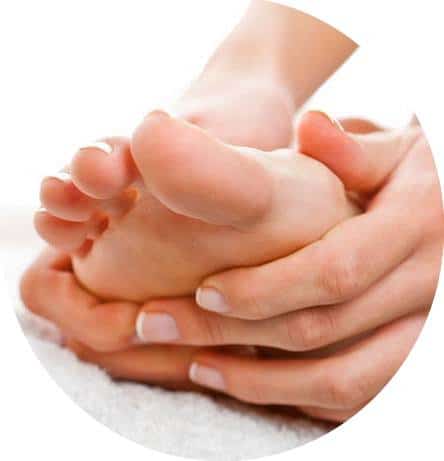Metatarsalgia

Metatarsalgia Treatment (What you need to know)
What to look for:
Localised pain in the ball of the foot, on the bottom of the foot, in the area of the sole of the foot just before the toes. Metatarsalgia, the scientific name for this problem, is a painful but common occurrence
One of the hallmarks of this disorder is pain in the ball of the foot during weight-bearing activities (running, walking, standing, etc.). Sharp or shooting pains in the toes also may be present, and pain in the toes and/or ball of the foot may increase when the toes are flexed. Accompanying symptoms may include tingling or numbness in the toes. It is common to experience acute, recurrent or chronic pain as a result of this problem. Some patients describe the feeling as being like “walking over pebbles, ” and others, whose pain is localised in one area, may wonder if they actually have a stone bruise.
There is no one specific cause of metatarsalgia. We have narrowed it down to a handful of factors, all of which have a common denominator: a forced change of the dynamics of the foot. In plain English, that means the foot is not moving as it should, and as a result, one or more of the metatarsal heads has become painful, often because of inflammation.
What it means to you:
If you’ve noticed pain in your forefoot, which gets worse during walking, running or standing, and/or pain in your toes, particularly when flexing them, you have some of the classic symptoms of metatarsalgia. Another hallmark is increased pain when going barefoot, particularly when standing or walking on a hard surface like tile, concrete, marble or asphalt, as opposed to carpet or grass. You may notice that over time, you begin to adjust your stride to avoid putting pressure on the ball of the foot.
The good news is that while painful and annoying, metatarsalgia is generally treatable with conservative measures, particularly once the origin of the problem is identified.

Brent Goddard - Podiatrist, discusses treatment options for Metatarsalgia and what your treatment options are.
Metatarsalgia develops when something changes or threatens the normal mechanics (working action) of the foot. Ultimately, this creates excessive pressure in the ball of the foot, and that leads to metatarsalgia. Some of the causes of metatarsalgia include:
- As men and women age, the fat pad in the foot tends to thin out, creating less cushioning and making them more susceptible to pain in the ball of the foot.
- Wearing shoes that do not fit properly: Shoes with a narrow, tight toe box, or shoes that cause a great deal of pressure to be put on the ball of the foot (high
- heels, for example) are often the cause of metatarsalgia. Because such footwear inhibits the walking process and forces the wearer to alter his or her step to adjust to the shoe, the mechanics of the foot are compromised.
- A bunion or arthritis in the big toe can weaken the big toe, and cause extra stress on the ball of the foot.
- Stress fractures of the metatarsal, or toe, bones often cause pain and force an individual to change their stride, thus bringing more pressure to the ball of the foot and stressing that area as well. (This is not uncommon among athletes such as runners, although they are not by any means the only ones who get stress fractures).
- Certain foot shapes contribute to metatarsalgia, A high-arched foot, or a foot with an extra-long metatarsal bone can case pressure on the forefoot region and contribute to pain and inflammation there.
- Claw toes or hammertoes can press the metatarsals toward the ground and cause stress on the ball of the foot.
- Arthritis, gout or other inflammatory joint disorders can produce pain in the ball of the foot.
- What else? Sometimes, a combination of the factors listed above will lead to metatarsalgia, and sometimes, the condition will appear with no apparent cause, to the frustration of patient and physician, since often a recurrence of the problem can be avoided by pinpointing the reason it developed in the first place.
Some of the best metatarsalgia treatment comes from being proactive. Stick to shoes that fit properly, particularly in the toe area. Avoid high heels whenever possible. If you have pain in the ball of your foot already, don’t panic. Treatment is generally conservative. However, it is imperative to have any foot problem checked by one of our Modpod Podiatrists. We can help you determine whether or not the problem is, in fact, metatarsalgia, since there are other problems which have similar symptoms but require different treatment. Assuming you have a routine case of metatarsalgia, with no complicating factors, such as diabetes, we generally will probably recommend one or more of the following measures, based upon your particular case of metatarsalgia:
- Rest: Elevate your feet after periods of standing and walking. This will take pressure off the ball of the foot, and allow it to recover. Using an ice pack at the site of the pain for 20 minutes on, 20 minutes off, may provide additional relief.
- Orthoses or other shoe inserts: If your foot specialist feels the case warrants it, he or she may prescribe orthotic inserts, which can help align your foot inside your shoe.
- K-Laser – Helps reduce inflammation and increases circulation to the area.
- Wearing appropriate footwear: Your Podiatrist will let you know whether you should change the type of shoes you wear.
- Exercising: Your Podiatrist may recommend a regimen of exercises for your feet and/or ankles to build strength and flexibility
- Non-steroidal anti-inflammatory medications or simple painkillers:
What else? Occasionally, if other factors complicate the problem, such as hammertoes or a trapped or pinched nerve in the foot, your foot doctor will recommend corrective surgery. However, it is important to note that the vast majority of patients are helped by the steps outlined above.
Metatarsalgia isn’t confined to one particular gender or age group, although it is women who wear high heels, and those types of shoes contribute significantly to the problem. However, athletes of either gender (this includes those “weekend warrior” types) who run, walk, play tennis, etc. in worn-out, too-tight or improper shoes can develop the problem, as can anyone who for, whatever reason, wears shoes that cause the forefoot to receive too much pressure. Remember that a lack of shoe cushioning also can play a role, so make sure athletic shoes, work shoes, and others are replaced according to the recommendation of your podiatric physician. (Note, too, that athletic shoes are activity-specific; in other words, tennis shoes are for tennis, not running, and so forth).
- Comprehensive History
- Complete assessment of Feet and legs
- Walking and Running analysis
- Diagnosis Explained
- Detailed Treatment Plan







